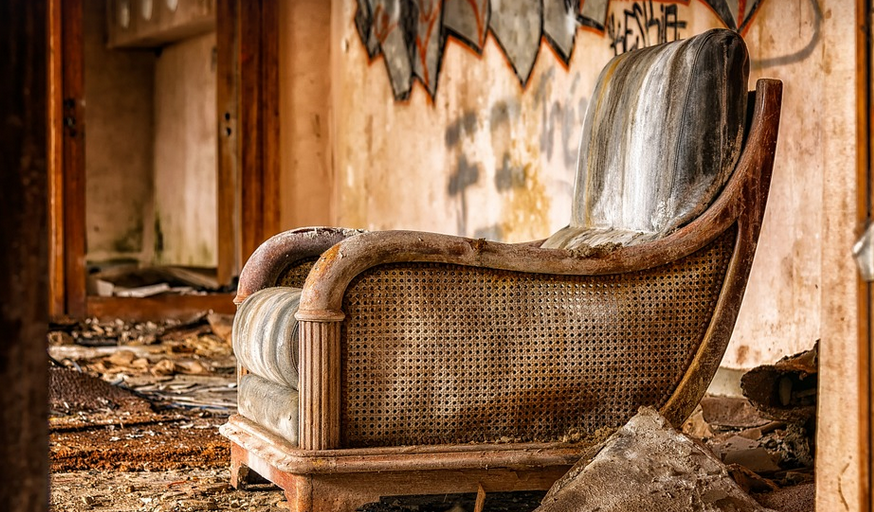Identifying Those Tiny Troublemakers
Termites, those tiny wood-munching critters, can be sneaky pests that wreak havoc on your home’s structural integrity. If you suspect a termite infestation, it’s important to act quickly. But how do you know if you have termites in your furniture?
While termites are notorious for attacking the wood framing of houses, they can also target and destroy various pieces of furniture. These pesky insects leave behind telltale signs that you might otherwise overlook. And when it comes to furniture, these tiny invaders often make their presence known in some rather unassuming ways.
Wood Rot – A Tell-Tale Sign
Identifying wood rot is a vital step towards understanding termite activity. When termites are feasting on your furniture’s structure, you might notice areas that have begun to decay. This can manifest as soft or hollow spots in the wood, accompanied by discoloration and a pungent odor. The extent of this damage will vary depending on how long the infestation has been going on. If you see any signs of wood rot, it’s time to take preventative measures.
The presence of wood rot can often indicate termite activity. These insects create tunnels and chambers within furniture as they feed on its inner structure. This disrupts the natural flow of air and moisture within the wood, which can accelerate its decay. If left unchecked, these infestations can significantly weaken the structural integrity of your furniture.
Discoloration – The Silent Threat
A subtle yet significant sign of termite activity is discoloration. As termites munch away at the wood fibers in your furniture, they leave behind a trail of tiny dark particles and an altered color tone. This often results in patches of discoloration that appear lighter or darker than usual. It’s essential to pay attention to any sudden changes in the original hue and texture of your furniture.
While some level of darkening is natural for wood aging, a drastic change might be a sign of termite activity. If you notice discolored areas on your couch, chairs, or tables, it’s time to investigate. Don’t let these tiny intruders go unnoticed too long.
Soft Spots – A Structural Warning Signal
As the termites burrow and tunnel through the wood of your furniture, they create soft spots that are noticeably weaker than their surrounding areas. This weakness can be easily detected by examining the surface of your furniture, paying close attention to any bumps or indentations in the wood. These soft spots often feel spongy or uneven to the touch, indicating a significant change in furniture structure.
If you find soft spots on a piece of furniture that weren’t there before, it’s a clear indication of termites at work. These insects leave behind weakened wood structures as they feast on it, ultimately compromising the entire piece’s stability and longevity.
Eerie Noises – A Sign to Investigate
A subtle but often overlooked sign of termite activity in furniture is a faint scratching or tapping noise. These sounds can be heard in areas where termites are actively tunneling through your wood structures. If you’re ever hearing strange noises coming from your furniture, it could indicate the presence of these destructive insects. If you suspect this sound may signify an infestation.
While some scratching and tapping might be normal for a wooden object that is being moved around, persistent and irregular noises should prompt a closer look. Ignoring these unsettling sounds can allow termites to do more damage in the long run. It’s crucial to address any unusual noises promptly.
Fecal Matter – A Clear Indication of Infestation
Termites leave behind fecal matter, often referred to as “frass,” when they feed on wood. This fine, powdery material can be observed near the areas where they’ve been active, such as around furniture legs or even in the crevices.
If you notice dark or crumbly particles of material in your furniture, this could signal a termite infestation. Pay close attention to any unusual dust patterns on surfaces. If you find fecal matter, it’s time for professional help to eradicate the infestation and protect your home.
A Silent Invasion – Be Proactive
Identifying signs of termites in furniture is essential for preventing further damage. Remember that these tiny insects can be insidious when they target your wooden belongings. These pests often work discreetly, making early detection a key factor in controlling their infestation.
Regular checks are crucial to prevent any issues down the line. By regularly examining your furniture, you can catch problems before they escalate into costly repairs or even complete replacements. Remember, prevention is always better than cure!


